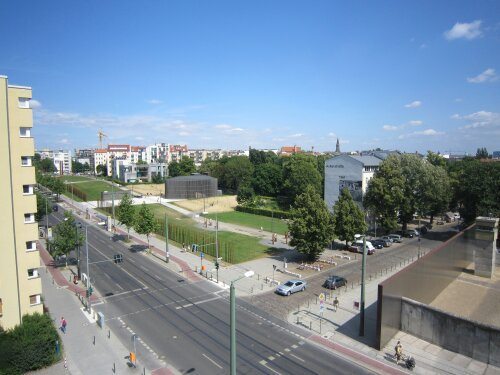Two phases of history mainly define how Germans perceive themselves today: WWII and the separation of the country through the wall. There are a few museums and memorials in Berlin dedicated to those years. But I find two especially recommendable.
Topography of Terror is not only an excellent recollection of the terrors of the Nazi regime but also gives some insight into why democracy cannot be imposed on a country but requires an understanding that needs to come from within a nation.
The Topography of Terror exhibition is located on the grounds of the former Nazi intelligence headquarters in close proximity of sightseeing hotspot Checkpoint Charlie. There is an outdoor exhibition chronicling the Nazis’ ascent to power, and a museum divided into several sections, each focusing on different aspects of the Nazi terror, like the structure of their intelligence apparatus, the treatment of homosexuals, or the systems in place in the countries conquered by German troupes during the war. Again you can just browse through and read the introductory panels or spend hours learning about the details and the interconnections.
There is no entrance fee to Topography of Terror. Learn more at www.topographie.de (switch to English in the top right corner).
After WWII the world plunged right into the Cold War. And Berlin was at the front of that new war. To get a feeling for what it was like to live with a wall dividing a city still trying to come to terms with the effects of more than a decade of horror I recommend the Berlin Wall exhibition along Bernauer Strasse.
Start off at Mauerpark (Oderberger Strasse) and walk on the left side of Bernauer Strasse towards Nordbahnhof. The GDR had the wall built right through the buildings that used to be here. An outdoor exhibition with photographs and short texts takes you back in time, explains how desperate people were to dig for months in an effort to bring family members from East Berlin to the West, and how the GDR regime didn’t even stop from blowing up a church because it was in the way of the wall.
At Ackerstrase the exhibition ends with a memorial to the people who died at the Berlin Wall and a small museum. From the museum roof, you get a great view of the memorial and the city skyline. The entrance is free. More information on the Berlin Wall exhibition is available on their website www.berliner-mauer-gedenkstaette.de.
To round up your picture of the GDR (and learn about the more fun aspects of life in East Germany) head over to the “DDR Museum” near Alexanderplatz.
Learning about Germany through visiting these four museums and the usual suspects, Checkpoint Charlie, Brandenburg Gate, the Reichstag and Museum Island (without visiting any of the museums) can take you as little as one and a half days but more likely three days.
However, I will argue that you don’t know a country until you’ve enjoyed its food. Therefore in the third installment of this series, I’ll give you a few suggestions about where to eat out in central Berlin.

